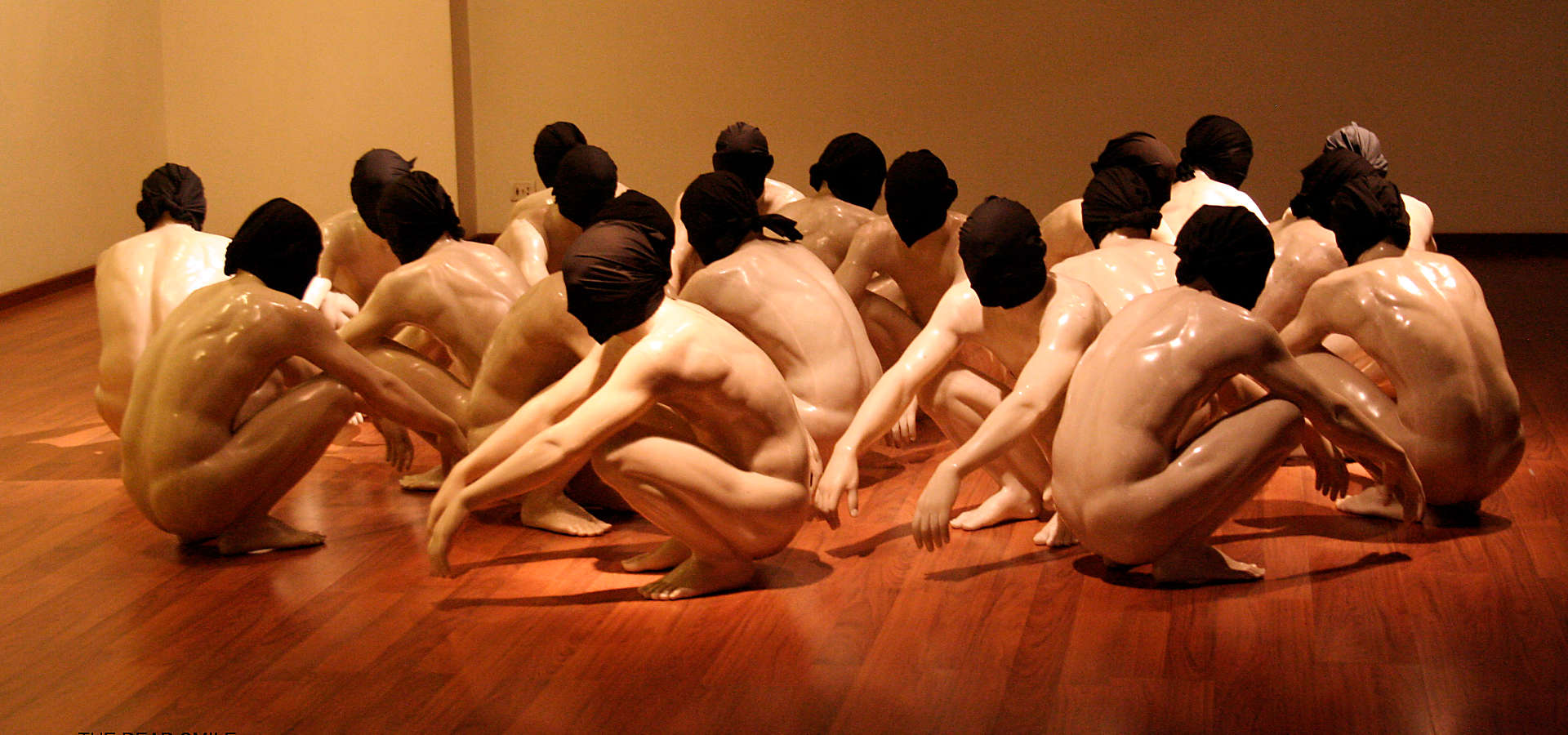The Birth of Blindness and The Dead Smile
Two major, large-scale figurative installations by Indian artist GR Iranna, alongside new sculptures and paintings, will be unveiled at Aicon Gallery London this March. The Dead Smile will fill the ground floor of the gallery, fully visible to passersby. This group of life-size, nude, male figures arranged in a circular formation all squat in the same position: their arms rest on their knees and their hands fall to the floor. Their heads and faces are concealed, wrapped tightly within black cloth that completely muffles and hinders any form of communication. The figures are closed to (and unaware of) the outside world.
‘the human truth of our times’, showing man as a being that has become “part of a modern, industrialized mass society, where conformity and order are maintained by a silencing of individuality and free thought”. –Donald Kuspit describing Iranna’s work Downstairs The Birth of Blindness fills the space with a row of nude figures on wheeled platforms, one behind the other in a praying pose. Their fingers are splayed against the platform and their foreheads to the ground. As before, any hint of awareness outside of their own consciousness is blocked out, this time by their deep involvement in their action.
The notion of ‘blindness’, be it in terms of personal morals in the act of following orders, or absorbing teachings by a blind consciousness, are continued in Iranna’s paintings. The series of Afternoon Sacrifice depicts two brightly costumed matadors in the midst of a fight. Both men are blindfolded and unable to see their adversary. Despite their alarming vulnerability in the face of such a beast, it is their innocence that protects them and allows them to continue regardless. Nevertheless, seen against the weight and speed of their all-seeing adversary, the bold costumes and formal stance of the fighters seemingly ridicules them, martyring them to their cause.
GR Iranna is well known for his allegorical tableaux. Of the works in this exhibition he has said that that they are “about acting blindly, about choosing a path without understanding the situation and its implications”. The artist distances his works from current politics and events, emphasizing for instance that the pose of the praying figures was not used for its religious intonation but rather for its universality: its belonging to all religions.
